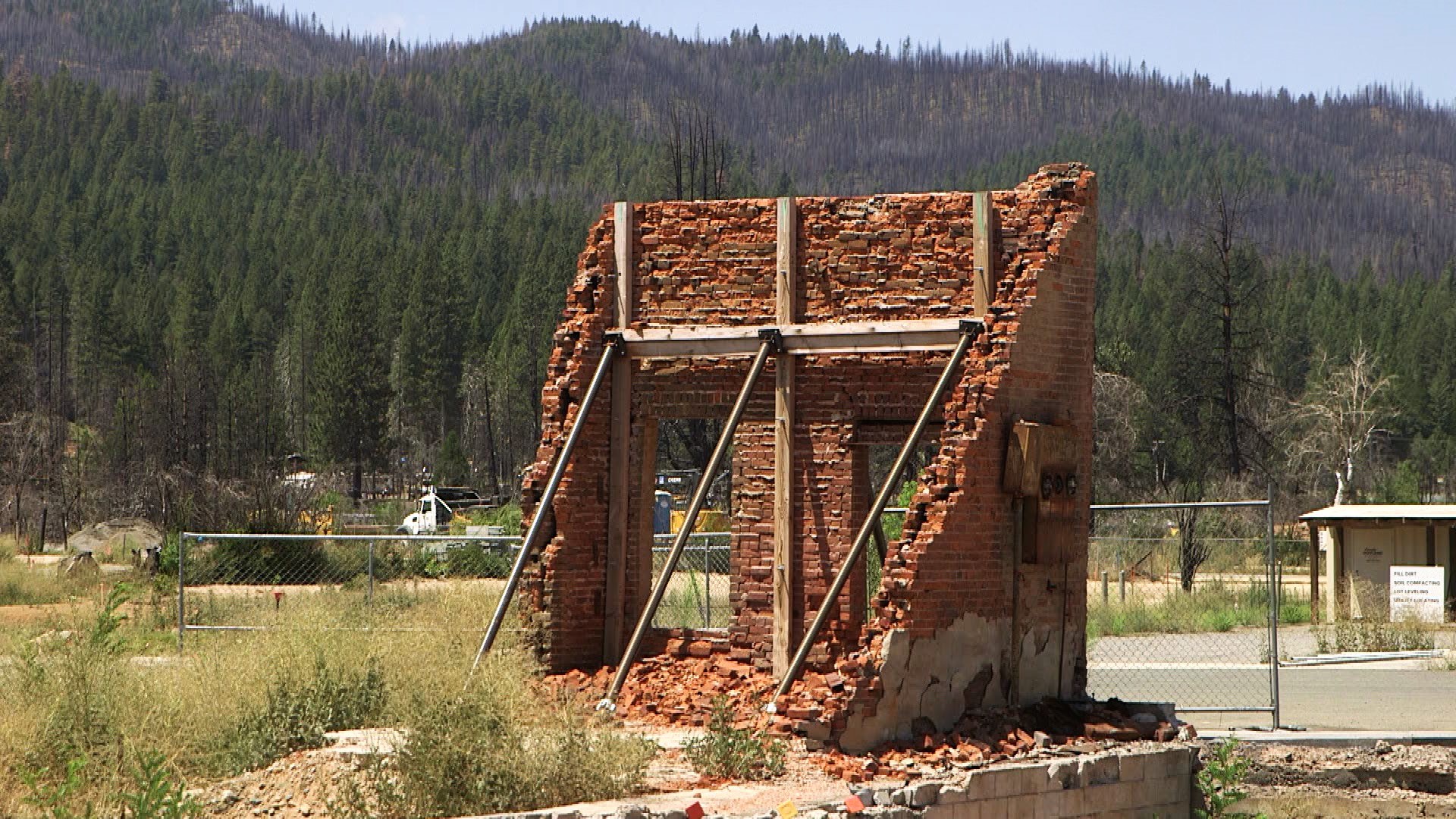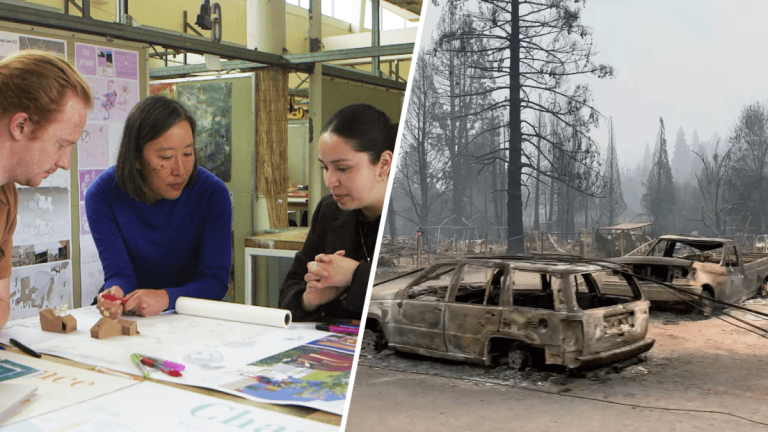Few students who study architecture get real-world experience designing a city from the ground up, but the fire-ravaged mountain town of Greenville is giving that opportunity to a group of San Francisco students.
For the past two years, students at California College of the Arts in San Francisco have worked with residents and leaders of the burned-out town in Plumas County, about 160 miles southeast, to imagine its future.
Through a unique scientific relationship, students in the program designed commercial and domestic buildings, as well as economic models as townspeople returned to the area in search of jobs and homes.
“It's a disaster,” said Peter Anderson, a professor of architecture at the college. “But it is an opportunity to rethink what the city should look like in the future.”
The historic mining town was devastated in 2021 by the Dixie Fire, which destroyed nearly 1 million acres across five Northern California counties. The town, a collection of old wooden buildings dating back to the Gold Rush, had no chance against the wind-driven flames that raced through the dense forests into the town. He saved little.
A former student in the college's architecture program who was from Greenville urged the school to enlist its students as part of an effort to redesign the city. The professors enthusiastically signed up. The school's architecture department now has eight classes and six teachers dedicated to the effort.
“A lot of times, when we're in school, we focus on the physical compositions of architecture, the buildings themselves,” Anderson said. “But this is a perfect opportunity for them to really see that everything they're working on connects to people's lives.”
Students regularly make the five-hour drive to Greenville to meet with community members to hear their ideas and needs, and get feedback on their own ideas.
There are now large areas of open land in place of the rows of historic buildings that once lined the main street. A few new homes, including some covered with steel to withstand future fires.
The local economy is in a precarious state as returning residents simultaneously search for ways to generate income and places to live. In an attempt to address this quandary, student Melissa Gomez envisioned a new building on parcels of land, each containing multiple residences including one for a homeowner, one for a renter, and a smaller unit for tourist housing like Airbnbs.

“My project is called ‘Pocket Living,’ and it was all about affordable housing for the working class,” Gomez said.
Student Ben Gresley designed a large barn-like structure that would house a manufacturing hub in the downtown area, where multiple businesses could manufacture and sell their goods. His drawings showed the possibility of a large open space filled with people.
“To be able to interact with a community that has gone through such a tragic event and to be in a place where we can help by generating ideas is great to be a part of,” Gresley said.
The designs created by the students are based on actual ideas studied by the Greenville community. The classroom drawings and presentations made it easier for the community to actually visualize those possibilities.
“Because they could see this idea in my students’ drawings, they were really excited about this possibility,” Assistant Professor Janet Kim said.
Kim said a number of community members and government agencies have applied for grant funding to establish some of the ideas generated by her students. The real-world experience is especially valuable for students as megafires caused by climate change become more common, with multiple communities having to reckon with extensive rebuilding over the past seven years.
“I think architects for future generations will be working on post-wildfire construction and building cities that can be more resilient to wildfires,” Kim said.
A separate focus at the school is looking at how to make use of materials resulting from fires, including millions of burned trees. The students analyzed the possibility of building more mills in the immediate area to help convert burned trees into building materials. The possibilities have raised possibilities for creative solutions. Architecture student Manthan Rasao has been experimenting with the process of constructing building tiles and bricks from forest debris such as pine needles.
“It was basically a new type of artefact from forest waste and created a new type of product,” Rasaw said.
Greenville leaders believe its revival must include resources to attract vital tourism to the area. But aside from the outside perspective students provide, input may also help serve as a balm as the city begins to reshape itself.
“I've heard from a lot of our community partners that they feel energized by the fact that students work in Greenville,” Kim said. “It helps them know that people across the area really care and want to contribute to the city’s recovery.”

